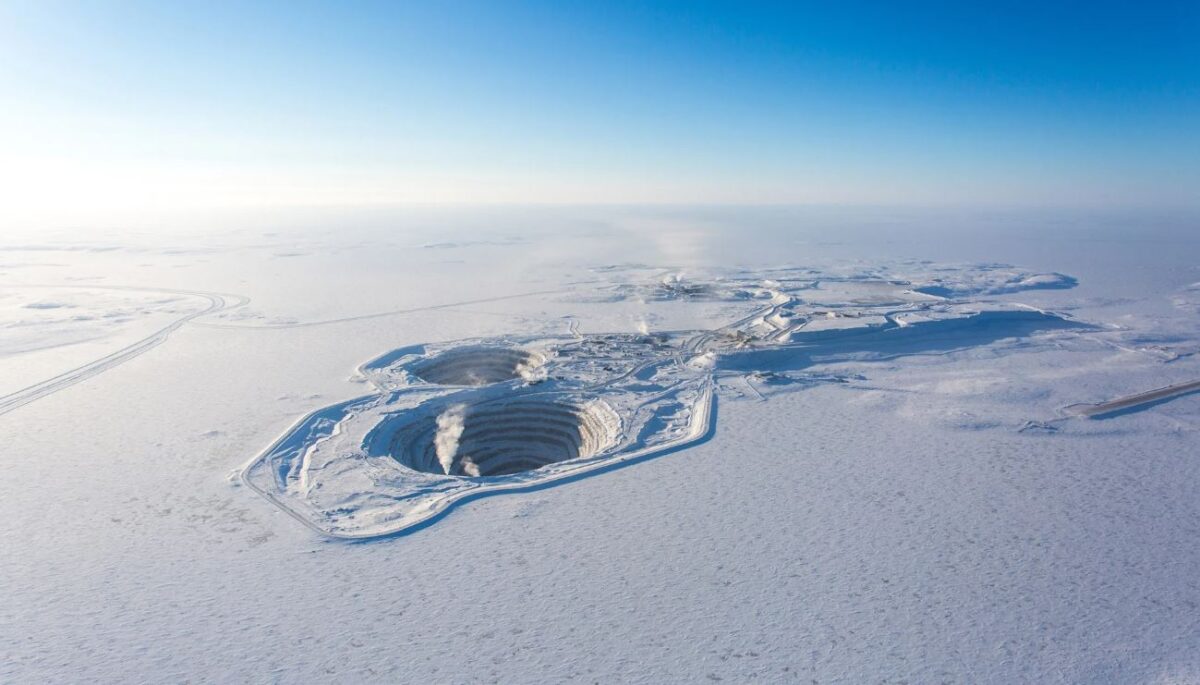Rio said the new solar power plant will comprise more than 6,600 bifacial PV panels that will not only generate energy from direct sunlight, but also from the light that reflects off the snow that covers the Diavik site for most of the year.
It is expected the facility will generate approximately 4.2 GWh of clean energy annually, or up to 25% of Diavik’s power needs.
Diavik Diamond Mine President and Chief Operating Officer Angela Bigg said the solar plant will significantly expand the operation’s existing renewable energy generation, which already features a wind-diesel hybrid power facility that has a capacity of 55.4 MW.
“We will be significantly increasing our renewable power generation with the largest solar power plant in Canada’s northern territories,” she said.
“The combination of solar and wind power will work well together as solar is more predictable than wind, but wind can generate power at all times of the day. Having both will provide more consistent renewable generation.”
Rio, which is targeting net zero emissions across its global operations by 2050, expects the solar plant will reduce diesel consumption at the Diavik site by approximately one million litres per year and reduce carbon emissions by 2,900 tonnes.
Construction of the solar plant is expected to start in the coming weeks with the facility scheduled to be fully operational in the first half of 2024.
The project is supported by more than $4.1 million (CAN 3.6 million) in funding from the Canadian government which this week announced draft clean electricity regulations designed to help the nation achieve a net-zero electricity grid by 2035.
In a statement, the Canadian government said setting new rules for cleaner power will “stimulate investments in renewable energy like wind and solar, smart grid and energy storage systems.”
“Our electricity grid is already one of the cleanest in the world, with more than 84% of electricity generated from non-emitting sources like hydro, nuclear, and wind,” it said. “The draft regulations will ensure we decarbonise the remainder of our grid, while meeting the needs of increasing demand for electricity.”
Canada has announced more than $45 billion in new tax credits and other major federal investments to help drive economic opportunities through the construction of new power sources and retrofitting of existing plants.
This content is protected by copyright and may not be reused. If you want to cooperate with us and would like to reuse some of our content, please contact: editors@pv-magazine.com.









3 comments
By submitting this form you agree to pv magazine using your data for the purposes of publishing your comment.
Your personal data will only be disclosed or otherwise transmitted to third parties for the purposes of spam filtering or if this is necessary for technical maintenance of the website. Any other transfer to third parties will not take place unless this is justified on the basis of applicable data protection regulations or if pv magazine is legally obliged to do so.
You may revoke this consent at any time with effect for the future, in which case your personal data will be deleted immediately. Otherwise, your data will be deleted if pv magazine has processed your request or the purpose of data storage is fulfilled.
Further information on data privacy can be found in our Data Protection Policy.